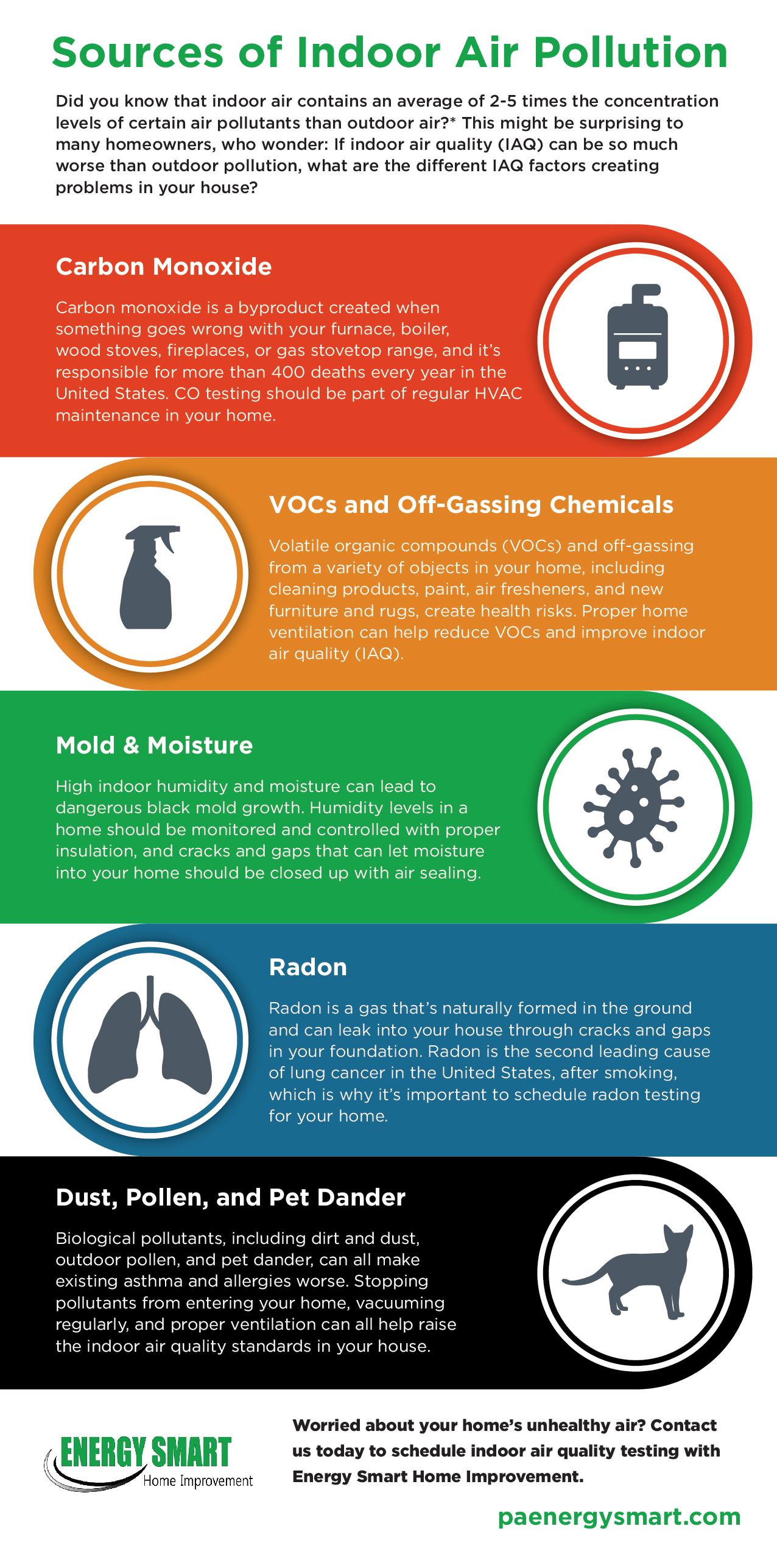
(View as a downloadable PDF version)
Did you know that indoor air contains an average of 2-5 times the concentration levels of certain air pollutants than outdoor air?* This might be surprising to many homeowners, who wonder: If indoor air quality (IAQ) can be so much worse than outdoor pollution, what are the different IAQ factors creating problems in your house?
*EPA
Carbon Monoxide
Carbon monoxide is a byproduct created when something goes wrong with your furnace, boiler, wood stoves, fireplaces, or gas stovetop range, and it’s responsible for more than 400 deaths every year in the United States. CO testing should be part of regular HVAC maintenance in your home.
VOCs and Off-Gassing Chemicals
Volatile organic compounds (VOCs) and off-gassing from a variety of objects in your home, including cleaning products, paint, air fresheners, and new furniture and rugs, create health risks. Proper home ventilation can help reduce VOCs and improve indoor air quality (IAQ).
Mold & Moisture
High indoor humidity and moisture can lead to dangerous black mold growth. Humidity levels in a home should be monitored and controlled with proper insulation, and cracks and gaps that can let moisture into your home should be closed up with air sealing.
Radon
Radon is a gas that’s naturally formed in the ground and can leak into your house through cracks and gaps in your foundation. Radon is the second leading cause of lung cancer in the United States, after smoking, which is why it’s important to schedule radon testing for your home.
Dust, Pollen, and Pet Dander
Biological pollutants, including dirt and dust, outdoor pollen, and pet dander, can all make existing asthma and allergies worse. Stopping pollutants from entering your home, vacuuming regularly, and proper ventilation can all help raise the indoor air quality standards in your house.
